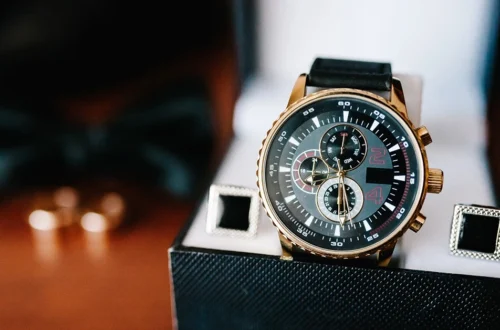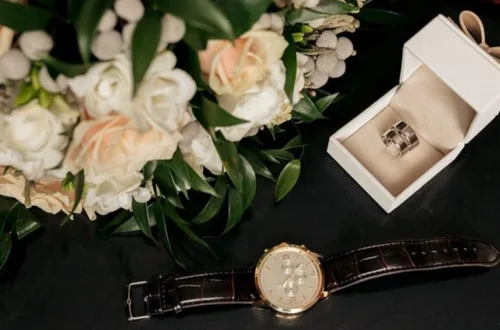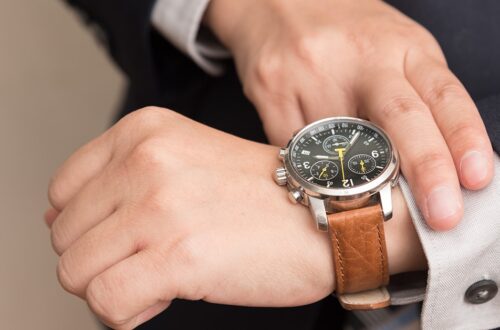What is a Watch Movement?
If explained in simple words a watch is powered by a movement but it is not as simple as it seems. A movement is actually the heart of any analogue watch, regardless to its price or brand.
There are several manufacturers that produce movements for their own watches and some not only produce for their own watch line-up but also sell to other watch manufacturers.
A Swiss automatic watch movement is also referred to as calibre which is a bit different from quartz movement. We will get into the types of and working of the watch movements later, let’s first understand the movement and its importance.
The movements can be separated by its functionality. Some watches only have time, some have time and date, some have day-date and time while some have chronograph functions in it. All the movements get complex with increased functions it has to maintain.
The renowned and widely used watch movements are Swiss or Japanese produced movements. Few of the Swiss luxury watches brands use their own manufactured movements to maintain its quality, precision and exclusivity. The mass producers of Swiss watch movements are ETA, Sellita and Ronda. On the other hand Seiko and Casio mass produce watch movements in Japan.
Most watch buyers get attracted by the appearance of the timepieces but few really get into the quality and precision of watch movements. As the external design is important for the watch, the internal mechanism is also equally important.
Quartz Movement
Quartz Movement is a battery powered movement that runs the clock. The first ever Quartz Movement was introduced in 1969 by Seiko, Japan. It was a revolution in the watch industry. With the introduction of the quartz movement the traditional watchmakers felt challenged. As the quartz movement was cheaper to produce and maintain due to less moving parts, the Swiss watch makers created their own version of quartz movement. This all together created a new era of quartz watches in the world.
Currently the mass producers of quartz movements are Seiko, Citizen and Casio, these Japanese companies also provide quartz movements to other watch manufacturers. The Swiss quartz movements are majorly produced by ETA, Sellita and Ronda
Diving a bit into quartz technology, the movement is powered by a battery. The battery sends an electrical pulse through a piece of quartz crystal. The electrical pulse sent through the crystal generates a vibration of 32768/sec which in terms keeps the movement oscillator moving.
Benefits of Quartz Movement:
- As the quartz movement has fewer moving parts than mechanical movement, it is durable and easy to maintain. While the battery power helps to reduce the number of parts.
- Quartz watches are battery powered so there is no need of manual watch winding or human interaction.
- The quartz movement has proved to be high in accuracy and barely varies time.
- In contrast to mechanical movements, quartz movements need lesser labour hours to produce and with reduced number of parts it is cheaper to produce.
Mechanical Movement
Watch collectors and enthusiasts have a different approach while buying a watch. Most watch collectors prefer to make watch purchases that have mechanical movement.
Since the start mechanical movements have powered all the types of watches which proves it to be reliable and durable for longer uses. However it comes to one’s personal choice when choosing a timepiece based on mechanical movements.
The mechanical movement is powered by a winding spring that has to be winded manually. The wearer has to wind it manually through the watch crown. The energy restored in the spring is then released to power the movement and ticking the clock.
As a matter of fact, there is not much difference between the quartz movement and mechanical movement. Only the battery in quartz movement is replaced by spring motion. Few more springs are added to mechanical movements that maintain other clock features.
However, a mechanical movement is more of a class sentiment as it takes intense effort and quality artistry to make one mechanical movement, which also makes it expensive.
The winding spring at the heart of mechanical movement stores kinetic energy that in return powers several gears and related springs for timekeeping.
Benefits of Mechanical Movement:
- As the mechanical movement needs quality and intense precision to build one, it really lasts a lifetime if properly taken care of.
- Due to its spring base power movement there is no need for batteries or battery replacement. The spring can be manually winded and you are good to go for days.
- The intrigue of moving parts makes it fascinating to watch the artistry put in the movement manufacturing. For this many watchmakers put a sapphire case back to show the intensive mechanical creativity.
Automatic Movement
Automatic Movement as it refers is basically a self-winding mechanical movement which restores kinetic energy into the spring by the wrist motion of the wearer. The effort of manual winding is eliminated with its automatic functionality.
Among the watch collectors an automatic watch is considered of high value with definite quality. Both Swiss and Japanese movement manufacturers produce their own automatic movements. Same as mechanical movement it is also complex in structure and an added metal weight that freely moves with wrist movement, it makes it interesting to see it too.
Benefits of Automatic Movement:
- The self-winding mechanism makes it easy for daily use. As one does not have to manually wind it.
- Likewise mechanical movements it is built with high-quality parts and extreme precision so it tends to last a lifetime.

















